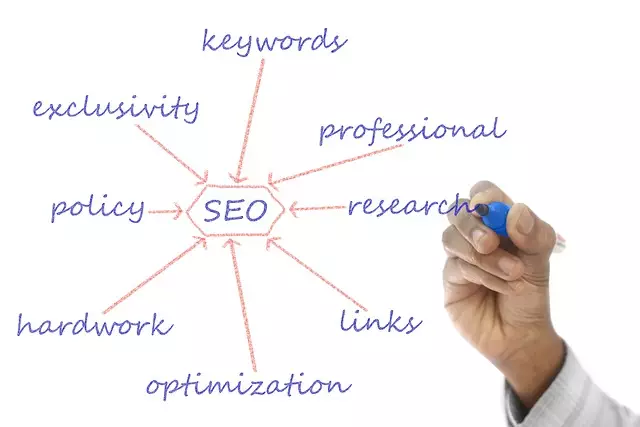SEO Content Writing is a strategic approach that blends compelling narratives with search engine optimization to engage readers, drive organic traffic, and enhance conversion rates. It involves understanding target audiences through analytics, crafting buyer personas, and creating content that addresses specific needs. Effective CTAs guide users towards desired actions, while keyword strategies and on-page SEO techniques improve visibility on search engines. Measuring KPIs like bounce rate and CTA click-through rates helps optimize for conversions. Continuous improvement, driven by data analysis, ensures the content stays relevant and competitive in a dynamic digital landscape.
In the dynamic landscape of digital marketing, SEO content writing is no longer just about ranking; it’s about driving conversions. This article delves into the core principles of conversion-focused content, exploring how to create compelling narratives that engage audiences and drive them to take action. From understanding the essence of modern SEO writing to optimizing for search engines and measuring success, we’ll guide you through strategies tailored for maximum impact, ensuring your content not only attracts but converts.
Understanding Conversion-Focused Content: The Essence of Modern SEO Writing

Conversion-focused content is the cornerstone of modern SEO writing, where the primary goal is to engage and convert readers into taking a desired action. Unlike traditional content that aims to inform or entertain, SEO content writing is strategic, tailored to search engine algorithms, and centric around user intent. It involves crafting compelling narratives, providing valuable information, and seamlessly integrating relevant keywords to drive organic traffic and improve conversion rates.
Effective conversion-focused content goes beyond mere keyword stuffing. It focuses on creating a seamless user experience, addressing pain points, and offering tangible solutions. By understanding the target audience’s needs and using persuasive language, writers can guide readers towards specific actions such as making a purchase, signing up for a newsletter, or downloading an e-book. This approach not only enhances search engine rankings but also fosters stronger connections with the audience, ultimately leading to increased business success.
Identifying Target Audiences: Tailoring Your Content for Maximum Impact

Identifying your target audience is a fundamental step in effective content creation for SEO Content Writing. By understanding who you’re creating content for, you can tailor your message to resonate with them on a deeper level. This involves gathering insights into their demographics, interests, and pain points. You can use tools like Google Analytics, social media analytics, and surveys to gather this data. Once you have a clear picture of your audience, you can create buyer personas that represent different segments, allowing for more precise content targeting.
In crafting conversion-focused content, it’s crucial to speak directly to these personas. Addressing their specific needs and questions in a language they relate to increases the chances of engagement and conversions. Whether it’s blog posts, videos, or social media updates, each piece should be tailored to guide your audience towards a desired action, whether that’s making a purchase, subscribing to a newsletter, or downloading an e-book. This personalized approach is key to maximizing the impact of your content strategy in the competitive digital landscape.
Crafting Compelling Call-to-Actions: Encouraging User Engagement

Crafting compelling call-to-actions (CTAs) is a vital aspect of conversion-focused content, where SEO content writing meets user engagement. A well-crafted CTA not only guides readers towards the desired action but also encourages them to take that action. CTAs should be clear, specific, and aligned with the overall goals of your content strategy. For instance, if you’re creating a blog post about “Top Tips for Optimizing Your Website for SEO,” a suitable CTA could be “Start Improving Your SEO Today” or “Download Our Free SEO Checklist.” These prompts are direct, provide immediate value, and motivate readers to take the next step, whether that’s starting an optimization process or accessing additional resources.
To make CTAs even more effective in your SEO content writing, consider using action-oriented language, creating a sense of urgency, and personalizing the call to resonate with your target audience. Incorporating these strategies can enhance user engagement by converting interested readers into active participants, leading to improved conversion rates and better overall performance for your online content efforts.
Optimizing for Search Engines: Keyword Strategy and On-Page SEO Techniques

In the realm of conversion-focused content, optimizing for search engines is a strategic must. At its core, successful SEO content writing involves a meticulous keyword strategy that aligns with target audience interests and search trends. Researchers should identify relevant keywords and phrases that potential customers might use when seeking products or services similar to what’s being offered. Incorporating these keywords naturally into compelling, informative content is key to boosting visibility in search engine results pages (SERPs).
On-page SEO techniques further enhance this process by ensuring content is not only optimized for keywords but also for user experience. This includes optimizing meta titles and descriptions, using header tags effectively, incorporating internal links, and optimizing images with alt tags. These practices work in tandem to improve a webpage’s ranking, making it more visible to search engines and increasing the likelihood of conversions.
Measuring Success: Key Performance Indicators for Conversion Rate Analysis

Measuring success in conversion-focused content creation is paramount for any digital marketing strategy. To assess the effectiveness of your SEO content writing, several key performance indicators (KPIs) should be tracked. These metrics provide insights into user engagement and the overall quality of your content, guiding adjustments to optimize conversion rates.
Key KPIs include bounce rate, average session duration, and pages per session. A low bounce rate indicates that visitors are finding value in your content, staying longer on the page. Higher average session durations suggest users are actively engaging with the material. Pages per session provides a gauge of how well your content answers user queries, as higher numbers imply more comprehensive and satisfying content experiences. Additionally, monitoring click-through rates (CTRs) from specific calls-to-action (CTAs) is crucial for understanding which elements effectively drive users to take desired actions.
Continuous Improvement: Iterating and Refining Your Content Strategy

In the dynamic landscape of digital marketing, continuous improvement is paramount for any successful content strategy. This involves a consistent process of iteration and refinement, where data and audience feedback are pivotal. By regularly analyzing performance metrics, such as click-through rates, engagement levels, and conversion rates, marketers can identify areas for enhancement. For instance, SEO content writing should evolve to incorporate emerging keywords and search trends while maintaining readability and relevance. This iterative approach allows for the creation of ever-more effective content that resonates with target audiences.
Refining your content strategy requires a keen understanding of user behavior and preferences. Staying agile and open to changes in industry dynamics enables you to adapt your SEO content writing techniques, ensuring your material remains optimized and engaging. Regularly testing different formats, tone, and delivery methods can uncover novel ways to capture attention and drive conversions. Through continuous improvement, businesses can create a dynamic content ecosystem that not only attracts but also retains an audience, ultimately bolstering their online presence and market competitiveness.



